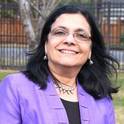
Article
Integrating STEM and Sustainability through Learning Gardens: A Place-Based Approach to the Next Generation Science Standards
Clearing: Pacific Northwest Journal of Community-Based Environmental Literacy Education
(2014)
Abstract
Our ecological and social problems are deeply interconnected. Climate change, habitat destruction, loss of biodiversity, food insecurity, air and water pollution, along with innumerable other environmental problems, are increasingly related to issues of equity and social justice. Addressing these problems requires a citizenry that is both scientifically and ecologically literate, ensuring that all people are empowered with the understandings, dispositions, and skills to address the challenges of this modern world.
CLEARING readers are likely familiar with another crisis of our times, the idea of “Nature Deficit Disorder” that Richard Louv (2005) so poignantly described in his landmark book, Last Child in the Woods: Saving our Children from Nature Deficit Disorder. Louv and numerous other leaders of the No Child Left Inside initiative have done a remarkable job pointing out the parallel phenomena of increasing numbers of children with ADHD and loss of time spent in nature, particularly unstructured time to explore, engage in imaginative play, and utilize all the senses. Nonetheless, time that children spend in school has become more rigid, siloed by discipline (e.g. 90+ minute literacy blocks), and disconnected from students’ daily lives and lived experiences.
As a society, we place unrealistic demands on educators. Classroom teachers are continually expected to do more with less—less money, less support, less time—with increasing mandates and pressures of accountability, whether from No Child Left Behind or Race to the Top. Informal educators provide a remarkable array of learning experiences, yet many teachers do not have the time or capacity to make use of these opportunities, particularly since in most cases, field trips have to be rigorously defended and justified in context of the school-day curriculum. However, since the early 1990s, the school garden movement has been working to mitigate traditional schooling taking place within the four walls of the classroom by bringing students outdoors on school grounds right where the schools are housed.
The adoption of the Next Generation Science Standards (NGSS) by 26 states has the potential to transform teaching and learning in and out of schools. The focus of the NGSS is on 12 “big ideas” in science (the Disciplinary Core and Component Ideas, NRC, 2012), bringing these together into process oriented learning goals (learning performances) that bridge scientific content with the practices of science and engineering, and crosscutting concepts that span all the disciplines of science (e.g. patterns, cause and effect, and systems and system models). The NGSS raises the bar for science in schools, and will require that much more attention be paid to science starting in elementary school. To help in this process, the NGSS are integrated by design. First, science education has been integrated into STEM education (Science, Technology, Engineering, and Math), elevating the practices and content of engineering design to the level of scientific inquiry. Further, the NGSS provide connections and links to the Common Core State Standards (CCSS), making them much more useful for developing integrated, project-based units of instruction. We believe that school gardens provide a rich milieu to put the NGSS into practice, making science relevant to the lives of students as they engage with their own place in meaningful ways across disciplines.
Disciplines
Publication Date
October, 2014
Citation Information
Sybil S. Kelley and Dilafruz R. Williams. "Integrating STEM and Sustainability through Learning Gardens: A Place-Based Approach to the Next Generation Science Standards" Clearing: Pacific Northwest Journal of Community-Based Environmental Literacy Education (2014) Available at: http://works.bepress.com/dilafruz_williams/49/
